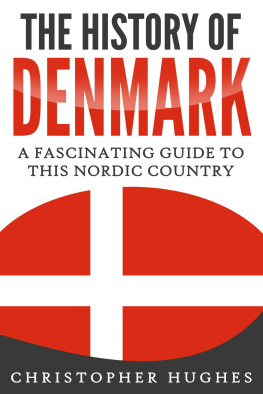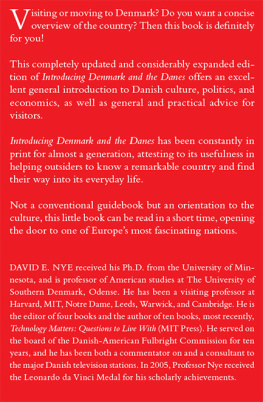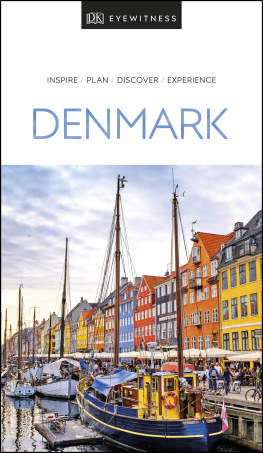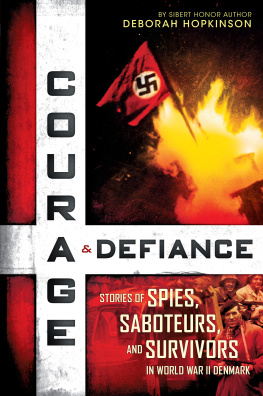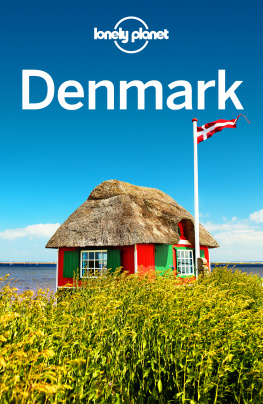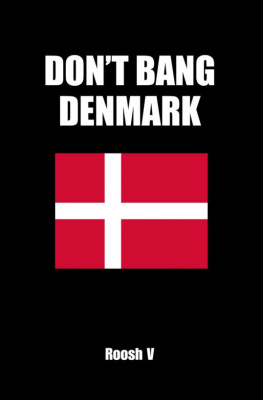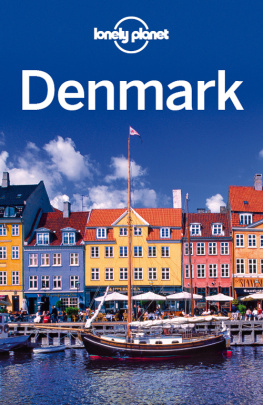Sacheverell Sitwell - Denmark
Here you can read online Sacheverell Sitwell - Denmark full text of the book (entire story) in english for free. Download pdf and epub, get meaning, cover and reviews about this ebook. year: 2011, publisher: Bloomsbury Publishing, genre: Detective and thriller. Description of the work, (preface) as well as reviews are available. Best literature library LitArk.com created for fans of good reading and offers a wide selection of genres:
Romance novel
Science fiction
Adventure
Detective
Science
History
Home and family
Prose
Art
Politics
Computer
Non-fiction
Religion
Business
Children
Humor
Choose a favorite category and find really read worthwhile books. Enjoy immersion in the world of imagination, feel the emotions of the characters or learn something new for yourself, make an fascinating discovery.

- Book:Denmark
- Author:
- Publisher:Bloomsbury Publishing
- Genre:
- Year:2011
- Rating:5 / 5
- Favourites:Add to favourites
- Your mark:
- 100
- 1
- 2
- 3
- 4
- 5
Denmark: summary, description and annotation
We offer to read an annotation, description, summary or preface (depends on what the author of the book "Denmark" wrote himself). If you haven't found the necessary information about the book — write in the comments, we will try to find it.
First published in 1956, this is a comprehensive study on Denmark, including the history and culture. To read a travel book by this author is to visit a country with a new pair of eyes.
Denmark — read online for free the complete book (whole text) full work
Below is the text of the book, divided by pages. System saving the place of the last page read, allows you to conveniently read the book "Denmark" online for free, without having to search again every time where you left off. Put a bookmark, and you can go to the page where you finished reading at any time.
Font size:
Interval:
Bookmark:
By
Sacheverell Sitwell

To
CLAUS AHLEFELDT
This electronic edition published in 2011 by Bloomsbury Reader
Bloomsbury Reader is a division of Bloomsbury Publishing Plc, 50 Bedford Square, London WC1B 3DP
Copyright Sacheverell Sitwell
The moral right of the author has been asserted
All rights reserved
You may not copy, distribute, transmit, reproduce or otherwise
make available this publication (or any part of it) in any form, or by any means
(including without limitation electronic, digital, optical, mechanical, photocopying,
printing, recording or otherwise), without the prior written permission of the
publisher. Any person who does any unauthorised act in relation to this publication
may be liable to criminal prosecution and civil claims for damages
ISBN: 9781448203987
eISBN 9781448203390
Visit www.bloomsburyreader.com to find out more about our authors and their books
You will find extracts, author interviews, author events and you can sign up for
newsletters to be the first to hear about our latest releases and special offers
This book is dedicated to my friend Claus Ahlefeldt, at whose instigation I went to Denmark in August 1954. H. E. the Danish Ambassador in London, Mr. Steensen-Leth, kindly encouraged the project by giving me letters, more particularly to Mr. Sigurd Christensen, the Chef du Protocol of the Danish Foreign Office, who did everything in his power to assist and facilitate my enquiries, not least by handing me over eventually to his assistant Mr. N. A. Holck-Colding, who, with his brother the expert on miniature painting, has procured most of the illustrations for this book.
It is owing to the help and patience of others that this volume has been able to appear at all in its present form. Through the kind services of Mr. Christensen I was introduced to Mr. Boesen, Inspector of the Rosenborg Collection, who enabled me to see many of the Rosenborg treasures in private, not least the rare and beautiful Persian polonaise carpets which are part of the Coronation regalia. To Mr. Christensen I owe, also, an introduction to Mr. Bjrn Rubov of the State Museum of Art; and enquiries which were made on my behalf from Mr. BJrn Kornerup, Ph.D., Historian of the Royal Danish Orders, and Mr. Arne Hoff, Inspector of the Arsenal Museum, both of whom did their best to answer questions about the history and origin of the heyducks uniforms. A special, and I believe unique photograph of one of the heyducks in his flower-pot hat was taken by the Court Photographer. Letters of introduction to Miss de Bardenfleth, Prioress of Vemmetofte, and to Countess Moltke, Deaconess of Vall, came from the same source; and Mr. Christensen, as well, obtained permission from Count Holstein to visit his castle of Ledreborg, put me in touch with the owner of Clausholm, and tried to arrange for me to see the Grauballe man at the Pre-Historic Museum at Aarhus. It is evident from all this that I owe a debt of thanks and gratitude to Mr. Sigurd Christensen, and I would like, also, to thank him and his English wife, the writer Monica Redlich, for hospitality in their delightful home. I must also thank Mr. Harald Langberg for the loan of photographs of stucco details from Frederiksberg, my regret being that I have as yet had no opportunity of seeing his lately published book on the buildings and stucco work of Denmark.
It is a pleasant task to add a special note of thanks to Danish friends. The dedication of this book will show my gratitude to Count Claus Ahlefeldt-Laurvig. Perhaps the clou or climax of a month in Denmark was staying at his mothers house at Gedser, which was my first and memorable experience of a Danish home. Another friend of longer standing, Countess Helle Danneskjold-Sams, made several excursions with us, and in the guise of Prioress of Gisselfeld took us to luncheon at that nun-less nunnery with its corridors lined with china, its romantic lakes and tall old trees. I would also thank Mr. Robert Coe, U.S. Ambassador in Denmark, who has so many friends in England; and Stephen Fox-Strangways, on holiday from Eton, who took the photograph of Ledreborg.
Danish friends, whom we met for the first time, include Baron Reedtz-Thott, who showed us the huge portrait collection at Gaun on our way to Falster. Through the particular kindness of the owner, Baron Juel-Brockdorff, we were enabled to see Valdemar Slot, one of the most beautiful of old Danish castles, with its portraits by Carl Gustav Pilo; while at Glorup, the property of Count Moltke-Huitfeldt, we saw this old house with its formal canal and clipped trees. Wed-ellsborg has perhaps a greater renown than any other house in Denmark. To its owner, and to Countess Wedell, I would express a special word of thanks. Another old house, Gylden-sten, also in Funen, recalls particular memories because of the beautiful objects in it and what I would call its Danishness.
In Jutland we stayed with Count Tido Wedell at his castle of Frijsenborg; were taken by him to luncheon at the delightful manor house at Tvede; and were introduced by him into the old and enchanted castle of the Rosenkrantzs, almost an unnerving experience for an Englishman. That this family whose name was on the lips of Shakespeare should still be living in their castle of Rosenholm is nearly too good to be true, and I could never forget their family tombs at Hornslet. Such an accumulation of the raw material of poetry is seldom seen. To Baron Berner-Schilden-Holsten I owe permission to see the interior of Clausholm, an old house for which I think I have sufficiently expressed my admiration in the pages that follow. And now I hope and believe I have thanked everyone in Denmark who was friendly and kindly to us, leaving till last the old lady, a rose-lover, or as I prefer it, rosomane, who got into touch with me over my abortive seeking for the Yellow Cabbage rose and asked me to stay with her in her thatched cottage on the isle of Fan, late in August, while the roses were still in bloom. I do not recall her name. But, even now, this is not all my thanks. For I must mention Mme Vera Volkova, who helped to the perfection of Margot Fonteyns dancing, who now teaches the Russian school to the Royal Danish Ballet, and who took us to see her pupils in class. My thanks go, also, to Mr. Niels Bjrn Larsen, their Matre de Ballet. And lastly I must thank my wife, who drove me all over Denmark without once colliding with a bicycle, who, as ever, helped and encouraged me with my writing, and who read my proofs.
It is unfortunately true that it is never possible to see everything. I have for instance not yet seen a performance by the Royal Danish Ballet. I am aware, too, that in missing the island of Fan, I have not seen something uniquely typical of Denmark. But I am sorrier, still, not to have gone to Tnder, that little town down near the German frontier which, I think, must be the prettiest place in the Kingdom. I am at least able to quote with permission from John and Phyllis Cradock (Bon Viveurs) charming account of it. I tried to visit as many as I could of the country houses but some few have still eluded me. Sophieholm, for example, described sometimes as the most beautiful house of the rococo period in Denmark; and Frederiksdahl which Mrs. Constance Villiers-Stuart in a recent article in Country Life (1 September 1955) describes with its family and Royal portraits, large flower paintings, and paintings of birds by Tobias Stranover, a Hungarian who also worked in England. Perhaps, these apart, and the interior of Fredensborg and the inside of the cathedral at Aarhus, I saw most of what there is to be seen in Denmark.
Font size:
Interval:
Bookmark:
Similar books «Denmark»
Look at similar books to Denmark. We have selected literature similar in name and meaning in the hope of providing readers with more options to find new, interesting, not yet read works.
Discussion, reviews of the book Denmark and just readers' own opinions. Leave your comments, write what you think about the work, its meaning or the main characters. Specify what exactly you liked and what you didn't like, and why you think so.

